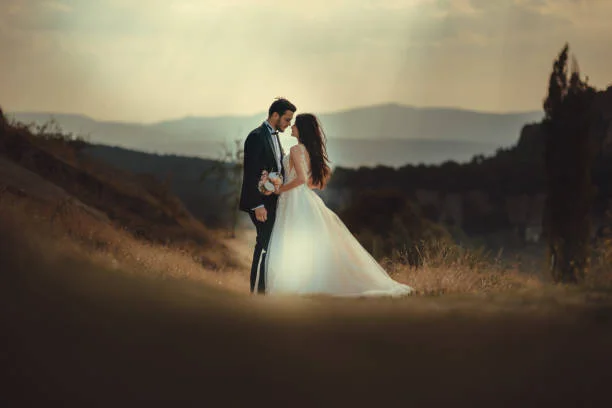Your wedding day will flash by faster than champagne bubbles rising to the surface. One minute you’re adjusting your veil, the next you’re wondering where the last eight hours went. That’s precisely why photography becomes your time machine—freezing those fleeting seconds that would otherwise dissolve into memory’s haze.
But here’s the thing about wedding photography: the magic isn’t just in the posed portraits or the ceremonial kiss. The real treasures hide in unexpected corners, in stolen glances, in the way your grandmother’s eyes crinkle when she sees you in your dress. Planning for these moments doesn’t mean scripting them—it means creating space for them to breathe.
Thanks for reading—why not stick around and see what else is new?
Getting Ready: The Magic Before “I Do”
Forget the frantic getting-ready montage you’ve seen in every wedding movie. The most powerful pre-ceremony moments happen in the spaces between chaos—when your sister helps you into your dress and you both suddenly realize this is really happening, or when your partner stands alone for a moment, adjusting their collar and taking a deep breath before everything changes.
Smart couples build buffer time into their timeline specifically for these unguarded moments. Schedule your photographer to arrive ninety minutes before you think you need them. Yes, ninety. This isn’t about capturing you applying mascara (though that’s fine too). It’s about being present for the subtle transformation that happens as you become a married person.
Consider creating a “first look” not just with your partner, but with your parents, your siblings, your closest friends. These reveals carry emotional weight that rivals the ceremony itself. Your father seeing you in your wedding attire, your best friend realizing their role in your story—these moments deserve the same intentional framing as your kiss at the altar.
When browsing for photographers on platforms like Wezoree, pay attention to their portfolio’s getting-ready shots. Do they capture genuine emotion or just pretty details? The best photographers understand that preparation time is storytelling time, not just documentation time. The key is communicating with your photographer about your family dynamics. Are your parents divorced? Who should see you first? Does your grandmother have mobility issues that might affect timing? Your photographer can’t capture authentic emotion if they’re navigating family politics in real-time.
Ceremony Gold: More Than Just “I Do”
Everyone knows to photograph the processional, the vows, the ring exchange, the kiss. But ceremonies are living theater, and the most compelling stories often unfold in the audience. Your nephew’s wide-eyed wonder as he watches you walk down the aisle. Your partner’s mother wiping away tears she swore she wouldn’t cry. The way sunlight shifts across faces during outdoor ceremonies, creating a natural spotlight that moves with the rhythm of your words.
Essential ceremony moments to capture:
- Guest reactions during the processional
- Parents’ faces when they see you in your dress/suit
- The officiant’s expressions during personal vows
- Ring bearer and flower girl candid moments
- Quiet pauses between ceremony segments
- Family members holding hands or comforting each other
- The exact moment you’re pronounced married (before the kiss)
The secret to ceremony photography lies in positioning and perspective. Working with a talented New York wedding photographer can help you identify vantage points that capture both the main action and the surrounding story. Can they move to the back of the ceremony space during certain moments? Are there elevated positions that offer unique angles? Some photographers use a second shooter specifically to capture guest reactions—an investment that pays dividends in storytelling.
If you’re having a religious ceremony, discuss traditions and restrictions with your photographer beforehand. Some faiths limit movement during certain portions of the service. Some venues have photography blackout periods. Planning prevents your photographer from missing crucial moments while trying to navigate unfamiliar territory.
Party Time: Reception Shots That Sizzle
Reception photography is where planning meets spontaneity in the most beautiful collision possible. You can orchestrate the timeline, but you can’t script genuine laughter or the exact moment your college roommate launches into an embarrassing story during their toast.
Reception moments that make albums legendary:
- Grandparents sharing a slow dance
- Kids sneaking extra cake when parents aren’t watching
- The best man’s face during an embarrassing speech story
- Candid conversations during cocktail hour
- Your reaction to surprise wedding gifts or performances
- Late-night shoe changes and tired but happy faces
- The cleanup crew (aka your wedding party) in action
- Spontaneous dance-offs or sing-alongs
The smartest reception photography happens in layers. Your photographer should be documenting the environmental story—how the space transforms from cocktail hour to dinner to dance floor mayhem. But they should also be hunting for character moments: your uncle’s questionable dance moves, your flower girl’s chocolate-covered face, the way elderly relatives watch younger generations with knowing smiles.
Create opportunities for organic moments by building flexibility into your reception timeline. Instead of cramming every minute with formal activities, leave breathing room for conversations to develop, for impromptu speeches, for that magical moment when someone starts a conga line. The best reception photos often happen during these unplanned interludes.
Consider the lighting evolution throughout your reception. Golden hour cocktails require different techniques than late-night dance floor shots. Discuss with your photographer how they’ll handle changing conditions. Some of the most stunning reception photos happen during transitions—the moment when natural light fades and string lights take over, creating an entirely different mood.
Conclusion
The difference between good wedding photos and extraordinary ones often comes down to intentional planning that leaves room for serendipity. Create a shot list, but don’t worship it. Communicate your vision, but trust your photographer’s expertise. Most importantly, remember that the best moments can’t be posed—they can only be witnessed and preserved.
Your wedding photos will outlast your flowers, your cake, even your dress. They’ll become family heirlooms, passed down through generations who will study your faces for clues about love, commitment, and joy. Plan thoughtfully, but don’t forget to be present for the moments you’re working so hard to capture. After all, the most important audience for your wedding day isn’t the camera—it’s you.
To explore all our latest posts in one place, be sure to visit the Management Works Media.






